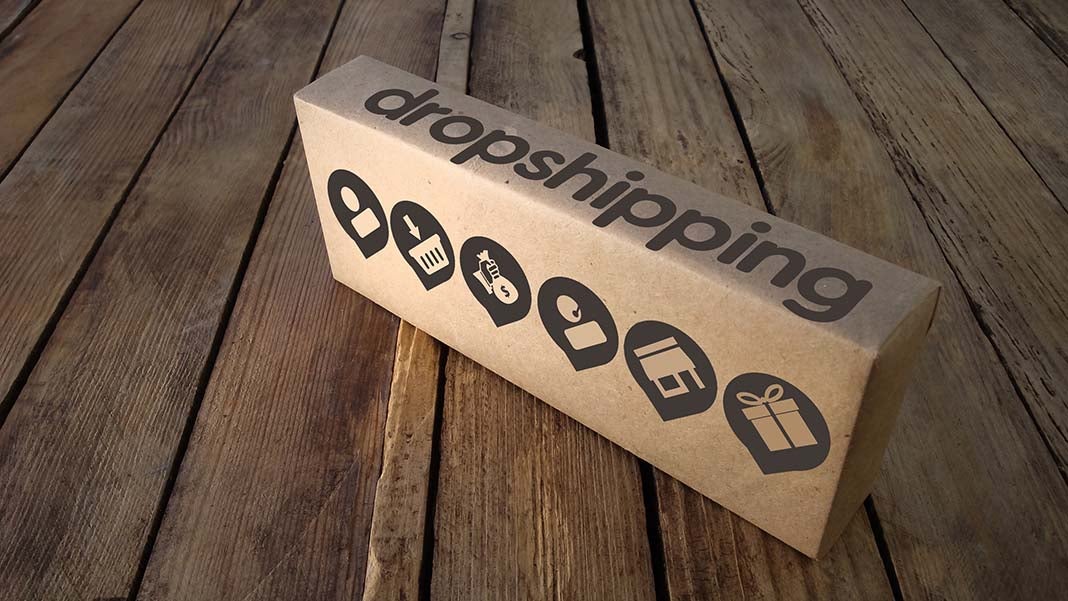Here’s One Ecommerce Business You Should Try This Year
By: Amos Onwukwe

Ever wondered how to start that business you’ve always dreamed of? Dream no more. Here’s one ecommerce business you should try this year.
Its February already, 2018 is on course and so should you. Taking action is one of the biggest steps to entrepreneurship and this post will guide you accordingly.
Assuming you want to start an ecommerce business, there are several you could try but one of my favorites is dropshipping and part of the plan is learning how it works.
How Dropshipping Works
Dropshipping allows you to run a retail business without retail risks, that is, without needing to buy or keep stock or inventory.
You simply advertise a supplier or manufacturer’s products on your dropshipping retail website, customers place orders, you take their money and place their orders with suppliers/manufacturers at a cheaper rate and keep the profit.
The good part: the supplier or manufacturer handles the fulfillment and delivery to your customers.
Sounds amazing right? But before we go into more detail, here are a few key statistics to keep in mind.
Some Key Ecommerce Statistics to Keep In Mind
1. Size of Ecommerce
According to Statista, in 2016, retail e-commerce sales worldwide amounted to 1.86 trillion US dollars and e-retail revenues are projected to grow to 4.48 trillion US dollars in 2021.
China is the biggest ecommerce market in the world. In 2016 total B2C sales stood at nearly $403.5b. By 2022 this figure is projected to more than double in size to a massive $956.5b.
2. Holiday Sales Figures
US Retailers are giving thanks, thanks to sales from Thanksgiving and Black Friday, put at $7.9b according to reports by Adobe Analytics. This represents a 17.9% increase from 2016 figures.
Similarly, Cyber Monday, 2017 brought in $6.59b in sales, the biggest so far in US retail history.
In the East, Alibaba’s 2017 Singles Day single day’s sales brought in a whopping $25b in 24hrs, nearly double of US Thanksgiving, Black Friday and Cyber Monday sales combined.
That’s impressive.
Back to Dropshipping
As a dropshipper you could be partaking in these juicy figures, thanks to cross-border commerce that allows you sell globally.
Following are some pros and cons of dropshipping:
PROS
- Easy entry
- Minimum (or zero startup cost)
- Lower running cost
- No need to buy stock
- No need for physical inventory
- No need for warehouse or storage facility
- Essential tasks like fulfilment and returns handled for you
- Ability to sell thousands of products from thousands of suppliers
- Take profit instantaneously
- No need to hire large or any staff
CONS
- Huge competition due to easy entry
- Huge competition against big names like Amazon
- Non interaction with stock means suppliers can supply crap…
- which could increase return rate…
- which can get you negative reviews and harm your reputation and revenue
- Some suppliers may take too long to deliver
- If self-hosting your store, all technical backend work lies on you
- You might be overwhelmed during peak periods
- Takes time to master the ropes for slower learners
- Handling multiple tax calculations can be a challenge
Having said that, here are:
10 Basic Things You Need To Succeed
1. A Good Platform
Shopify is one of the most popular ecommerce platforms out there, currently hosting over 500,000 online stores.
You can get your dropshipping store up and running in minutes, all the technical stuff is done for you.
2. Good Supplier(s)
A supplier can either make or mar your dropshipping business. Extra care must be taken when shopping for a dropshipping supplier.
Thankfully, the Wholesale Supplier Directory helps reduce the hassle of selecting one. Suppliers are vetted and ranked according to certain key criteria.
3. A Good Niche
Dropshipping niche selection is another key area to focus on. Some niches are ultra-seasonal, here this moment, gone the next.
You need a niche that keeps you in business all year long. Niche research is perhaps one of the most important aspects of dropshipping.
4. Some Technical Knowledge
Dropshipping will require you to carry out certain basic technical functions, especially if running a WordPress self-hosted store—things like importing products, updating website, themes, plug-ins, etc.
5. An Automation App
Apps like Oberlo and some others help you completely automate your dropshipping business.
Such apps handle product importation, pricing automation and a lot of other key aspects of dropshipping.
6. Marketing Skills
To succeed at dropshipping your marketing game needs to be top form. From social to search engine, marketing helps you target and reach the right audience and grow your business faster.
7. Patience
Babies, plants, they all take time to grow. Your dropshipping business is no exception; it needs time to grow and scale as you work hard at it.
8. Continuous Learning
There’re a ton of resources on the Internet dedicated to helping dropshippers succeed. A simple Google search of dropshipping blogs for instance will turn up a good number.
9. Joining Dropshipping Forums
The best thing about dropshipping forums is that their members are people who actually own or run dropshipping businesses. Their advice are full of practical tips you can implement to grow your dropshipping business.
10. Staying up to Date
Staying up to date is vital to success in business. For instance Facebook and Google often introduce changes to their algorithms that can impact your business. You need to know when these changes occur and how to quickly adapt.
A Dropshipping Success
There are certainly those who have failed or continue to struggle with their dropshipping business.
Similarly, others have succeeded and continue to succeed at dropshipping.
Irwin Dominguez is one of them; he grew his dropshipping business from zero to $1m in just 8 months.
Conclusion
There you have it, a brief introduction to dropshipping and how you can start a new ecommerce business in 2018 and beyond.
Take action now and share your results.
3331 Views












